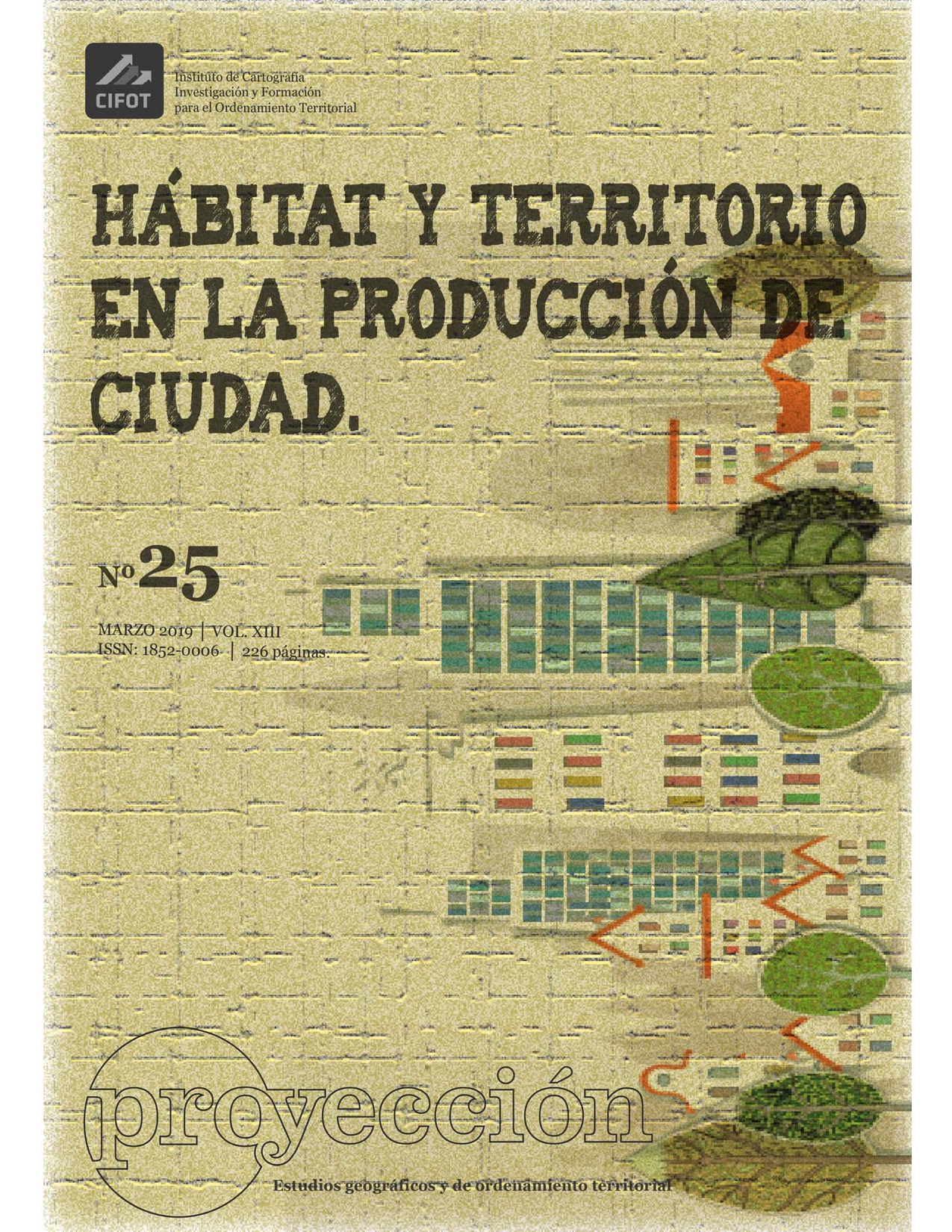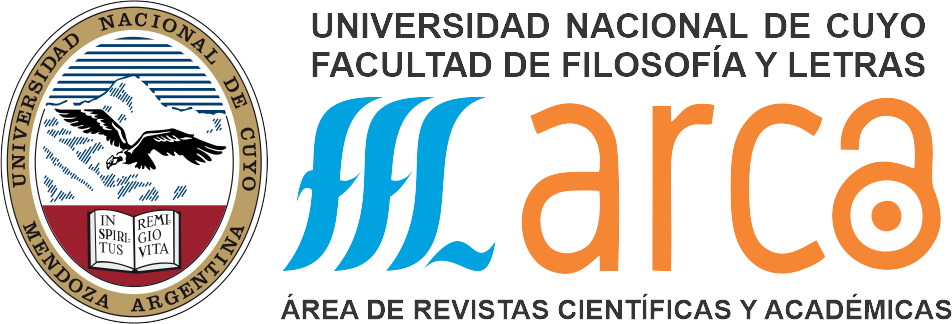Evaluation of Centralities in Sustainable Territorial Planning: Mexicali, Mexico
Keywords:
Centralities, sustainable territorial planning, territory and public policiesAbstract
The efficient use of the territory is a current worldwide priority. An option oriented to this purpose is the sustainable territorial planning that integrates the main components of urban dynamics based on centralities. This concept refers to the areas of the city of greater strategic importance due to their level of attraction in urban displacements. However, in most Mexican cities and some Latin American cities, the flow of quality information for the development of territorial planning is prolonged, which complicates the dynamic planning processes. Hence the importance of this work, whose purpose is to propose a methodology that allows the determination and analysis of urban centralities, and facilitates the realization of territorial planning in shorter periods with easy access information. The methodology includes the following several steps: the determination of the current urban centralities in Mexicali, Mexico, as a case study; the analysis of socio-economic, environmental, and urban territorial conditions by the analysis of 36 indicators; and the classification of centralities into four profiles that indicate the degree of sustainable development and the level of consolidation that support the implementation of public policies and sustainable territorial planning.
References
ALCÁNTARA, E. (2010). Análisis de movilidad urbana. Espacio, medio ambiente y equidad. Bogotá, Colombia: Corporación Andina de Fomento.
BANCO MUNDIAL. (2018). Desarrollo urbano. Recuperado de: http://www.bancomundial.org/es/results/2013/04/14/urban-development-results-profile
BENEDETTI.A. (2011). Terrritorio, lugar, paisaje. Prácticas y conceptos básicos en geografía. Buenos Aires Editorial de la Facultad de Filosofia y Letras. Universidad de Buenos Aires.
BHAT, C., HANDY, S., KOCKELMAN, K., ET AL. (2001). Assessment of accessibility measures (Reporte FHWA/TX-01/4938-3). Texas: Center for Transportation Research.
CORTES, H., DELGADILLO J. (2014). Alcances del ordenamiento territorial en la planeación del desarrollo. elementos conceptuales. Recuperado de: http://www.sedatu.gob.mx/sraweb/datastore/spc/2014/Libro_Politica_Territorial_en_Mexico_ALCANCES_OT_PLANEACION_DESARROLLO_ELEMENTOS_CONCEPTUALES.pdf
CUTINI, V. (2001). Centrality and Land Use: Three Case Studies on the Configurational Hypothesis. Cybergeo: European Journal of Geography DOI: 10.4000/cybergeo.3936
FERRANDIS, A., NOGUERA, J. (2016). Planeamiento territorial sostenible: un reto para el futuro de nuestras sociedades; criterios aplicados. Cadernos Metrópole, 18(37), 743-763. https://dx.doi.org/10.1590/2236-9996.2016-3706
FREEMAN, L. (1977). A Set of measures of centrality based on betweenness. Sociometry, 40, 35-41.
GIL, J. (2014). Analyzing the Configurtation of Multimodal Urban Networks. Geographical Analysis, 46,368-391.
GÓMEZ D. (2013). Ordenación territorial. España: Ediciones Mundi-Prensa.
GÓMEZ D., GÓMEZ T., GÓMEZ M. (2013). Salud, ambiente y territorio. Una visión integrada en un mundo globalizado. Estoa. Revista de la Facultad de Arquitectura y Urbanismo de la Universidad de Cuenca, 2, 7-19.
GUIMARAES, R. (2003). Tierra de sombras: Desafíos de la sustentabilidad y del Desarrollo territorial ante la globalización. Santiago de Chile: CEPAL.
HANDY S., NIEMEIER A.D. (1997). Measuring Accessibility: an exploration of issues and alternatives. Environment and Planning A, 29, 1175-1194.
INSTITUTO MUNICIPAL DE INVESTIGACIÓN Y PLANEACIÓN URBANA DE MEXICALI, IMIP. (2014). Programa Ordenamiento de la Zona Metropolitana de Mexicali.
INSTITUTO NACIONAL DE ESTADÍSTICA Y GEOGRAFÍA INEGI (2010), XII Censo General de Población y Vivienda, México.
JÄRV, O., TENKANEN, H., SALONEN, M., et al. (2018). Dynamic cities: Location- based accessibility modelling as a function of time. Applied Geography, 95, 101–110.
LITMAN, T. (2019). Evaluating accessibility for transportation planning. Measuring People’s Ability to Reach Desired Goods and Activities Victoria transport policy Institute. Recuperado de: http://www.vtpi.org/access.pdf
MASSIRIS, A. (2006). Políticas Latinoamericanas de ordenamiento territorial: Realidad y desafíos. Colombia: UPTC (Universidad Pedagógica y Tecnológica de Colombia).
MORAES, R., NADALIN, V., MONASTERIO, L. et al (2013). Urban Centrality: A simple Index. Geographical Analysis, 45,77-79.
OECD (2015). OECD Urban Policy Reviews: Mexico 2015: Transforming Urban Policy and Housing Finance. OECD Urban Policy Reviews. Doi:10.1787/9789264227293-en.
ONU (2007). Guías de Orientación de Políticas Públicas. Recuperado: ttps://esa.un.org/techcoop/documents/socialpolicy_spanish.pdf
ONU-HABITAT (2015). Directrices Internacionales sobre Planificación Urbana y Territorial. Nairobi: Programme des Nations Unies pour les établissements humains.
PALACIO-PRIETO, J., SANCHEZ-SALAZAR, M., CASADO-IZQUIERDO, J., et al. (2004). Indicadores para la Caracterización y Ordenamiento del Territorio. México: Universidad Autónoma de México.
RODE P., FLOATER G., et al (2014). Accessibility in cities: transport and urban form. The new climate economy. Recuperado de:
ttps://files.lsecities.net/files/2014/11/LSE- Cities-2014-Transport-and-Urban-Form-03.pdf
SÁNCHEZ, E. (2011). El "desarrollo territorial sostenible". Concepto y exigencias para el derecho público y la práctica de las administraciones Práctica urbanística: Revista mensual de urbanismo, 100, 9-23.
SATTERTHWAITE, D. (2016). A new urban agenda? Environment & Urbanization. International Institute for Environment and Development (IIED), 28, 1,3-12.
SEVTSUK, A., MEKONNEN, M. (2012). Urban network analysis. Revue internationale de geomatique, 2, 287-305.
ZAMBON, I., SERRA, P., GRIGORIADIS, E., et al (2017). Emerging urban centrality: An entropy-based indicator of polycentric development and economic growth. Land Use Policy, 68, 365-371.
ZHONG, C., SCHLÄPFER, M., MÜLLER ARISONA, S., et al. (2015). "Revealing centrality in the Spatial structure of cities from human activity patterns". Urban Studies Journal, 54, 2, 437 - 455.
Downloads
Published
How to Cite
Issue
Section
License

This work is licensed under a Creative Commons Attribution-NonCommercial-ShareAlike 3.0 Unported License.
La revista Proyección establece las siguientes condiciones de publicación para los/as autores/as:
- Los/as autores/as conservan los derechos de autor y ceden a la revista el derecho de publicación bajo la Licencia Creative Commons Atribución-No Comercial-CompartirIgual 3.0 No portada (CC BY-NC-SA 3.0) que permite a terceros copiar, distribuir, exhibir y ejecutar la obra citando siempre la fuente y los datos de autoría según la norma prevista por la Revista Proyección. Esta licencia no permite el uso de la obra con fines comerciales.
- Todos los trabajos publicados por Proyección, Estudios Geográficos y de Ordenamiento Territorial serán bajo la modalidad de gratuidad para autores/as y lectores/as.










